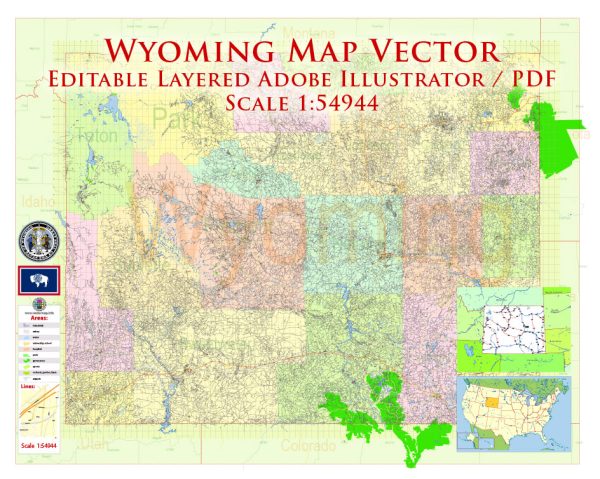Wyoming is a state located in the western region of the United States. It is the 10th largest state by area but has one of the smallest populations in the country. Here are some key facts about Wyoming:
- Capital: Cheyenne
- Largest City: Cheyenne
- Statehood: Wyoming became the 44th state to join the Union on July 10, 1890.
- Geography: Wyoming is known for its diverse and rugged landscapes, including the Rocky Mountains, high plains, and deserts. The state is home to several national parks and natural wonders, including Yellowstone National Park, Grand Teton National Park, and Devils Tower National Monument.
- Economy: Wyoming’s economy is primarily based on industries such as energy production (coal, oil, natural gas), agriculture, tourism, and mining. It is a major coal-producing state.
- Education: The University of Wyoming, located in Laramie, is the state’s only public four-year university.
- Government: Wyoming has a state government consisting of a governor, a bicameral legislature, and a judiciary system. It has a reputation for a limited and conservative government.
- Population: Wyoming has one of the lowest populations of any U.S. state, with most of its residents living in the southern part of the state, particularly around Cheyenne and Casper.
- Nickname: Wyoming is often referred to as the “Equality State” because it was the first state in the United States to grant women the right to vote.
- Wildlife: Wyoming is home to a wide variety of wildlife, including bison, elk, moose, grizzly bears, wolves, and a wide range of bird species. It is a popular destination for wildlife enthusiasts and outdoor enthusiasts.
Wyoming’s stunning natural beauty and outdoor recreational opportunities make it a popular destination for those interested in activities such as hiking, skiing, and wildlife viewing. It is also known for its rich history, including its role in the expansion of the American West during the 19th century.


 Author: Kirill Shrayber, Ph.D.
Author: Kirill Shrayber, Ph.D.